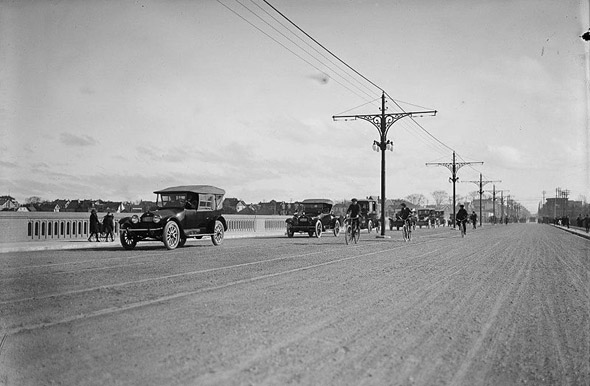
Bloor Viaduct complete, 1910s (2/96)

Don't have an account? Register
Enter your account data and we will send you a link to reset your password.
To use social login you have to agree with the storage and handling of your data by this website. Privacy Policy
AcceptHere you'll find all collections you've created before.
Wonderful picture. It’s hard to believe that they could build such great bridges in those days with the equipment they had to use.it was certainly built with the future in mind!
The Ancient Egyptians did the, Great Pyramids,look what they had to do ,unbelievable.
It was really only a hundred and ten years ago, not a thousand, and great architecture had been constructed around the world for hundreds of years, even thousands, in some cases, so it shouldn’t be too hard to believe. What I think may be shocking is how quickly it was erected, just three years, and for a cost of just $2.5m, at the time, or $39m in todays dollars. Ironically, the Luminous Veil, the barrier preventing suicides, cost $5.5m in 2003. At the time, the Prince Edward Viaduct was the second most popular place for suicide by jumping, after The Golden Gate Bridge—in the world.
concrete has been used for much much longer then this!
Your comment is so very accurate about the “future in mind”, as the concrete uprights supporting the structure were designed with large
openings near the top with the idea of a below grade railway using them. It was to save the TTC millions of dollars years later when they were used for the Bloor Street subway.
I recall an essay about old constructions: up until relatively recently (the last 100 years or so), getting the materials was very, very expensive (shipping from the other side of the world took time and $$$), and labour was relatively very, very cheap…So things were built with the best materials available.
Today, it’s the reverse: materials, even somewhat exotic materials, are easier and relatively cheaper to get, but labour and other costs are much, much higher (don’t get me wrong, I absolutely want labourers to be paid very, very fairly), so we very often skimp on the construction.
It doesn’t help that people expect/need things (thinking of buildings here) to be able to adapt quickly, so we don’t build with block or concrete interior walls any more; and we don’t bother designing entryways that are also works of art (again, usually), because 10 years from now, the building’s going to be used for some other purpose, or need to have the infrastructure upgraded to handle new technologies, etc.
just some thoughts.
Watch out for speed traps at both ends!
No wire is up yet to stop jumpers.
I bet it didn’t take forever to build
It seems to be the only thing in Toronto ever built with the future in mind. Putting the lower level on for a future subway train was inspirational and saved a lot of money.